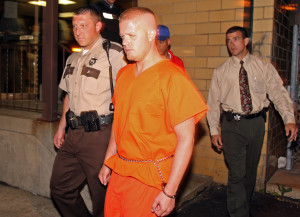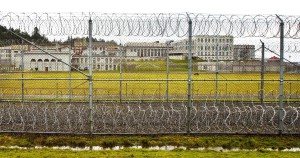St. Louis: Most Dangerous City in America?

The fact that St. Louis was featured at the top of CQ Press’s “Most Dangerous Cities in America” list has become a joke for Wash. U. students. Admittedly, it is amusing to claim that you go to school in the most dangerous city in America. But in reality, this rather notorious distinction can have a very negative impact on St. Louis – and it is not even true. While there are certainly parts of St. Louis that Wash. U. students should avoid while alone late at night, this is a fact of life in any city. If one takes the time to understand how statistics were used to create this list, it becomes clear that St. Louis does not deserve such an infamous reputation.
To begin with, the very source of the statistics used to make the “Most Dangerous Cities List” is a strong opponent of the list itself. That source? The FBI. In fact, when you visit the online FBI site that lists this data, a pop-up warning takes over the screen before you are allowed to enter the website. The warning states that lists such as the one published by CQ Press “lead to simplistic and/or incomplete analyses that often create misleading perceptions adversely affecting communities and their residents.” The FBI’s Uniform Crime Reports, the information on which the CQ Press list is based, is actually fairly easy to understand. Cities are categorized by population and the number of cases of murder, rape, robbery, aggravated assault, burglary, larceny-theft, motor vehicle theft and arson reported in the past year. However, CQ Press ignores the important distinction between crimes like rape and murder and crimes like car theft, and instead merely adds up these separate totals to come up with a single number consisting of seven of the eight types of crimes (larceny-theft is left out). This means that a stolen car counts the same as a dead body when it comes to deciding how “dangerous” a city is.

Another important factor that CQ Press ignored in making its list is the unusual way that St. Louis is divided from its surrounding suburbs. While most other cities in America incorporate their suburbs into their cities, St. Louis is separate from its suburbs. Together, those suburbs form St. Louis County. This means that low crime areas such as Clayton are not included in the count, whereas in other cities similar areas help to drastically bring down the crime rate. CQ Press also releases a list of “Most Dangerous Metropolitan Areas” – a list in which St. Louis is defined as reaching from Jefferson County to Clinton County in Illinois. This includes the notoriously dangerous East St. Louis, yet Metropolitan St. Louis ranks only 103rd on this list. While most Wash. U. students don’t regularly venture as far as Jefferson County and probably are not particularly worried about crime in that area, it shows how differently statistics can be interpreted based on where a city draws its borders.
CQ Press argues that its lists are a service to the public and that they should be praised because of the attention that they bring to crime. However, these lists are compiled in such a lazy manner that they do not accurately reflect crime rates and only serve to scare people away from St. Louis. It is also important to note that these crimes are reported to the FBI on a volunteer basis, and that not every city reports crime in the same way. St. Louis does have some dangerous areas, and Wash. U. students should use common sense about which areas to avoid. Yet Wash. U. students should not feel afraid to explore St. Louis – a city rich in culture and history that offers all the benefits and drawbacks that any true city has to offer.